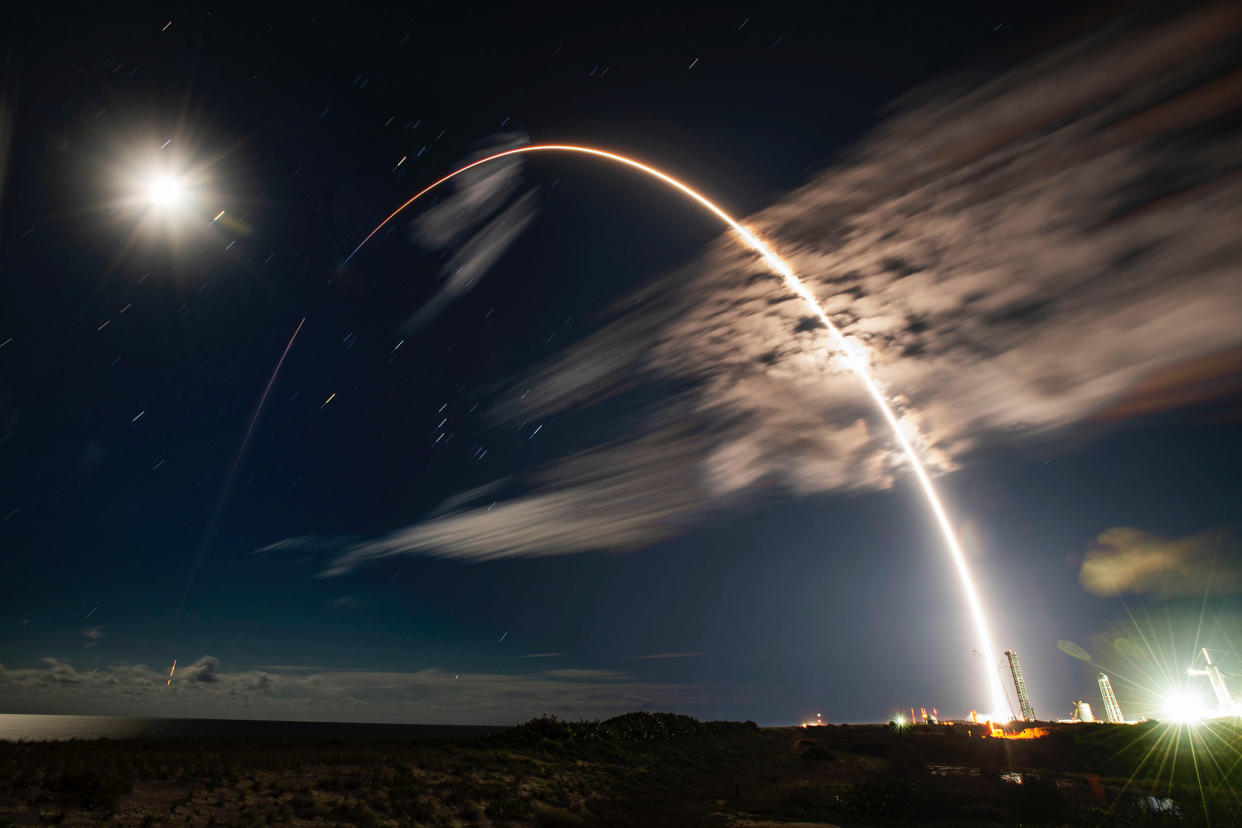Watch SpaceX launch big communications satellite today after weather delay

SpaceX plans to launch a commercial communications satellite to orbit on Monday (Feb. 6), and you can watch the action live.
A Falcon 9 rocket carrying the Amazonas Nexus satellite for the Spanish company Hispasat is scheduled to lift off from Cape Canaveral Space Force Station in Florida on Monday at 5:32 p.m. EST (2232 GMT on Feb. 6). The launch had been targeted for Sunday (Feb. 5), but SpaceX called that attempt off due to bad weather.
Watch it live here at Space.com, courtesy of SpaceX, or directly via the company. Coverage will begin about 15 minutes before launch.
Related: 8 ways that SpaceX has transformed spaceflight

If all goes according to plan, the Falcon 9's first stage will come back to Earth for a vertical touchdown 8.5 minutes after liftoff on the SpaceX droneship Just Read the Instructions, which will be stationed in the Atlantic Ocean off the Florida coast.
It will be the sixth liftoff and landing for this particular booster, according to a SpaceX mission description. The rocket also lofted the SES-22 communications satellite, the Hakuto-R moon lander for Tokyo-based company ispace and three batches of SpaceX's Starlink internet satellites.
The Falcon 9's upper stage will continue carrying Amazonas Nexus skyward, eventually deploying the 10,000-pound (4,500 kilograms) satellite into geostationary transfer orbit just under 36 minutes after liftoff.
Related stories:
— SpaceX reveals 'Starshield' satellite for national security
— SpaceX: Facts about Elon Musk's spaceflight company
— The 20 most memorable SpaceX missions from its 1st 20 years in photos
Amazonas Nexus will then spend more than six months making its way to geostationary orbit, about 22,200 miles (35,700 kilometers) above Earth. Hispasat will perform a few weeks of checkouts with the spacecraft, then slip it into its final orbit and put the satellite to work providing internet service to broad swathes of the globe.
Amazonas Nexus "will cover the entire American continent, Greenland and the North and South Atlantic corridors and will be focused on connectivity services in remote areas and in air and maritime mobility environments," Hispasat wrote in a prelaunch statement.
"Hispasat has reached multiple business agreements to lease the long-term capacity [of] Amazonas Nexus with operators and service providers in the governmental and connectivity fields for the aviation sector and in remote areas," the company added.
Monday's launch will be SpaceX's ninth already of 2023, keeping the company on pace to break its single-year launch record of 61, set in 2022.
Editor's note: This story was updated at 3 p.m. ET on Feb. 5 with the new launch target time of 7:32 p.m. EST and the updated weather forecast, then again at 6:20 p.m. ET with news of the delay to Feb. 6.
Mike Wall is the author of "Out There" (Grand Central Publishing, 2018; illustrated by Karl Tate), a book about the search for alien life. Follow him on Twitter @michaeldwall. Follow us on Twitter @Spacedotcom or Facebook.

